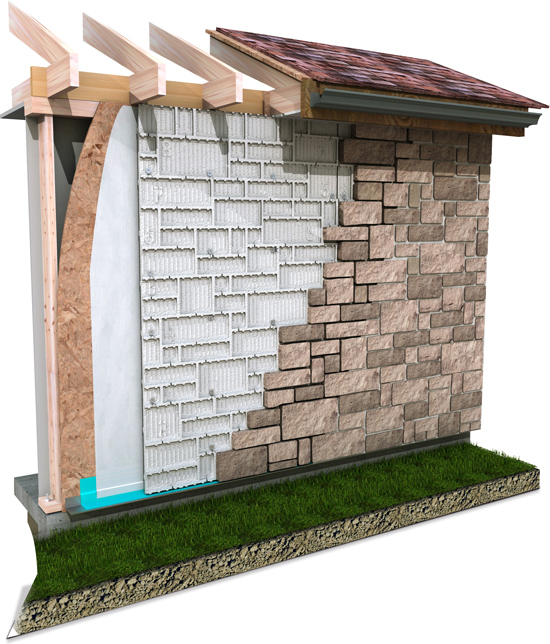Masonry Meets New Energy Codes
Traditional Masonry Veneers
Traditionally, masonry veneers are either anchored brick, concrete, or natural stone units, or adhered manufactured stone, or thin-cut natural stone. One concern is how continuous insulation is incorporated into an adhered veneer. The addition of insulation between furring strips may appear to be a solution, but furring strips often replace a drainage mat to avoid water management problems. The bottom line is that the designer has to rely on the back-up wall for R-value in adhered veneer.
Newer Wall Systems
Newer wall systems, which include thin veneer systems, various rainscreen walls, and foam panel systems usually have thinner and/or lighter units and employ different anchoring techniques. Insulation and CI is sometimes included.
Thin brick systems are composed of metal panels with or without ridges that act like furring strips to hold the metal panel off the wall. Half circles are punched out to support brick. Each brick is glued into place before mortaring. Thin brick systems are available in both insulated and un-insulated versions with and without drainage channels in the metal panel. Systems with ridges allow for air pressure to equalize on both sides of brick cladding. Insulation is also provided from the back up wall. One drawback to thin brick systems, however, is that installation can be somewhat complicated and time consuming as each brick must be glued into place.
Masonry rain screen walls allow bigger masonry units, but metal channels interrupt the insulation, hence there can be no CI. Far preferable in a number of respects are foam panel wall systems. Relatively new to the market, they consist of polystyrene foam panels, stainless steel screws or anchors, masonry units and mortar. Type S mortar can be used, which has the advantage of additives to achieve easier pumping, better bonding, flexibility, and dimensional stability. A variety of masonry units are available including durable stone, clay, and concrete brick with others under development. Masonry units are friction fit in the foam, with different types of units having different foam panels.
 |
3D rendering showing the existing wall or substrate, foam insulation panel, anchor/screws, stone, and specially engineered mortar. |









